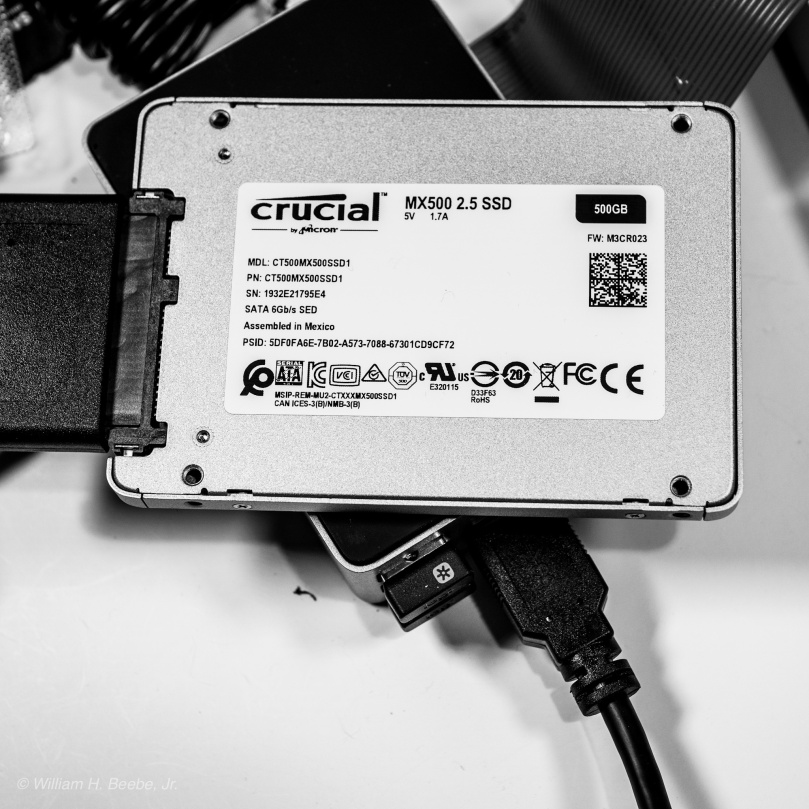It’s been seven weeks (since this past Thursday) when I “officially” retired from my current job. It’s been an odd passage of time, as I’ve been doing all sorts of little tasks, some of which have added up to bigger projects. And example of little tasks adding up is when I go puttering about in the garden. I will spend some time in an area trimming until I get tired of trimming. Then I’ll see some weeding or other bit of clearing that needs to be done. Then I’ll stop that after a bit and do some trimming. Or some transplanting. It all seems a bit disjoint at that level, but after about a month of doing that I suddenly noticed now much neater the entire garden seems to have gotten, even neater and trimmer than the same time last year. My level of satisfaction in the garden is considerable. I see green and many blooming flowers, and I’ve even begun to see some bumble bees flying amongst the azaleas that have been blooming since early January.
I’ve also noticed that my writing on the blog has once again fallen considerably. I wrote all those wonderful promises about how I wasn’t going to let that happen, and yet here we are. I was also supposed to use Ulysses to do my writing instead of sticking to the WordPress old-style web browser editor. And yet, while Ulysses allows the writing to just flow (I’m using it to write this), I keep going back to the web editor because it lets me do what I want to do to create my postings, which also means formatting and inclusion of photographs and other graphic images, which Ulysses doesn’t support very well. In particular I want the image in my WordPress site to be linked from within the post. I can add images to my writing and then upload the entire thing via Ulysses, but I can’t get Ulysses to create the necessary HTML link so that clicking (or touching) the image in the post will call it up. That feature is very handy with a screen capture, for example, when the reader wants to view the image in much greater detail.
I did finally mange to figure out how to pair my logi MX Ergo trackball with my iPad Pro 12.9” second generation. It turned out to be very simple using ipadOS 13.3.1. Now that it’s enabled it makes writing on the iPad that much easier, as I can rapidly and precisely place the text input cursor anywhere the document.
Other things of note:
- I’ve lost weight (slowly) since retiring, and that’s with me not even trying to diet. I’m down about five pounds from Christmas, and the weight loss seems to be slowly continuing. Personally I attribute that to not eating any junk food or eating out for lunch. I eat nearly all my meals here at home, being careful to control refined sugars, salt, and keeping a reasonable balance of vegetables and animal protean in my meals. Back around 2000 I cut my red meat consumption down to an absolute minimum (there are still some amino acids I need), depending more on poultry and seafood for my needs. Nothing is fried. I either grill or sauté it on low heat, and minimally cook the vegetables if called for.
- All the little critters are a lot more relaxed because I’m nearly always home. The only time I’m not home is when my wife and I are out on errands or doctor appointments. Otherwise I’m here with them. My cats in particular love when I’m sitting in my chair, as they now come up and stretch out on my chest, with their head up next to my jaw. Then they relax, close their eyes, and purr until they’re asleep napping.
- I’m getting ready to sell one of the two Priuses. I figured this would happen as I no longer am commuting. When I do have to do a bit of travel, I just take my wife’s car. Her car has about 40,000 less miles on it than mine does.
- My wife and I have cleared out a lot of stuff from within the house. We still have quite a bit more to unload, but what has been unloaded has allowed me to bring the middle bedroom back into use and to open the door so that it’s now a part of the house, which helps air conditioning and heating. I could have never done that while working, even part time there at the end.
I guess in retrospect I’ve been fairly busy. For example I can now go up on the roof every weekend and use my electric leaf blower to keep the roof under the live oak clean as well as the gutters, which means that the leaves are decomposing on the roof. It was extremely annoying in the past to just happen to look up and see seedling growing out of the gutters because of the leaf decomposition buildup. Which of course led to me raking up six 44 gallon bags of oak leaves, which got picked up today, along with two roll-around cans of full of crepe myrtle branch trimmings. I haven’t trimmed the crepe myrtles in the back yard in years.
Here’s to getting even more done, and the sincere hope that the retirement lazies don’t strike any time soon, if ever.


You must be logged in to post a comment.